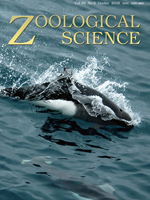The raccoon dog (Nyctereutes procyonoides, Canidae, Carnivora) is highly adaptable to urban environments. Populations of carnivorans inhabiting urban areas sometimes differ ecologically and genetically from those in rural areas. However, there is little information on urban raccoon dogs. This study focused on raccoon dog populations in Tokyo, one of the most highly urbanized cities in the world. We examined the genotypes of 10 microsatellites for 101 fecal samples from raccoon dogs inhabiting the grounds of the Imperial Palace, a green space in central Tokyo. We successfully genotyped 58 samples originating from 31 individuals. We also analyzed muscle tissue samples from raccoon dogs from the grounds of the Imperial Palace, the Akasaka Imperial Grounds (a green space close to the Imperial Palace), and the surrounding urban area, and then investigated the genetic structure and diversity of these populations, and the genetic differentiation among them. The population on the grounds of the Imperial Palace was genetically differentiated from that in the Akasaka Imperial Grounds, suggesting that the roads and buildings act as barriers to gene flow. In addition, the population on the grounds of the Imperial Palace showed greater genetic difference from that in the surrounding area than that in the Akasaka Imperial Grounds. We speculate that the moats around the Imperial Palace restrict individual ranges within the palace grounds and limit migration and gene flow to other areas.
How to translate text using browser tools
1 October 2016
Population Structure of the Raccoon Dog on the Grounds of the Imperial Palace, Tokyo, Revealed by Microsatellite Analysis of Fecal DNA
Wataru Saito,
Yosuke Amaike,
Takako Sako,
Yayoi Kaneko,
Ryuichi Masuda
ACCESS THE FULL ARTICLE

Zoological Science
Vol. 33 • No. 5
October 2016
Vol. 33 • No. 5
October 2016
genetic differentiation
Imperial Palace
microsatellite
Nyctereutes procyonoides
population genetics
raccoon dog
urban habitat




